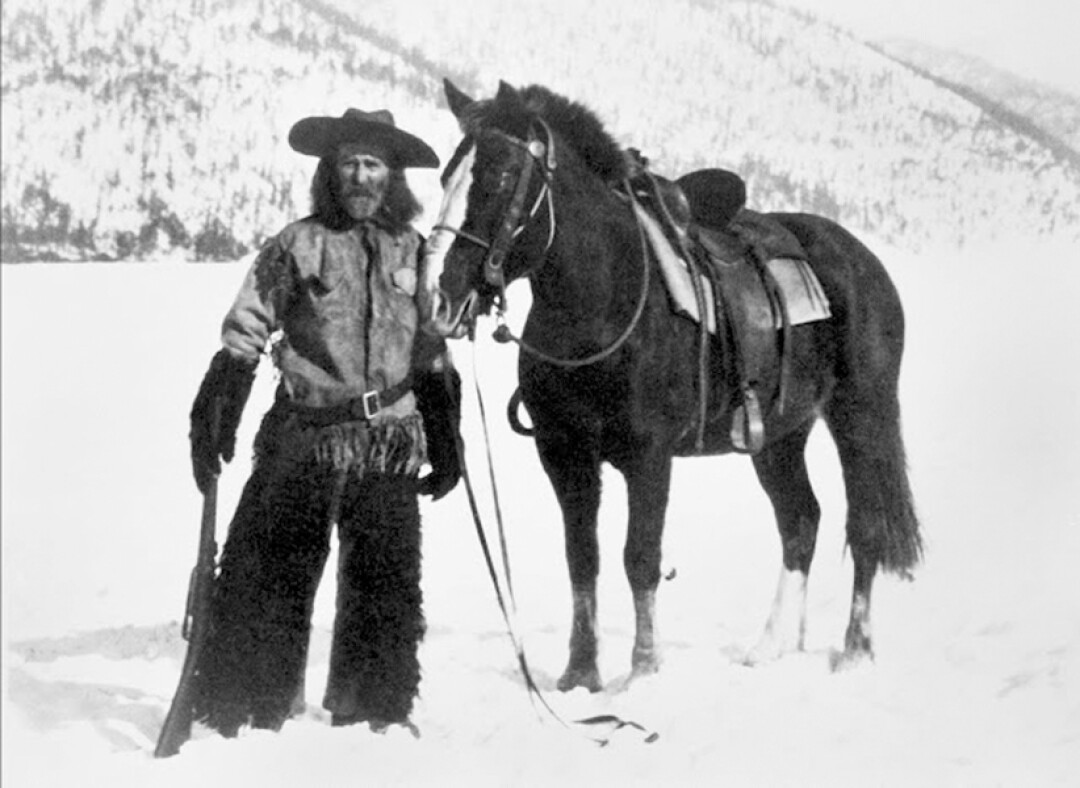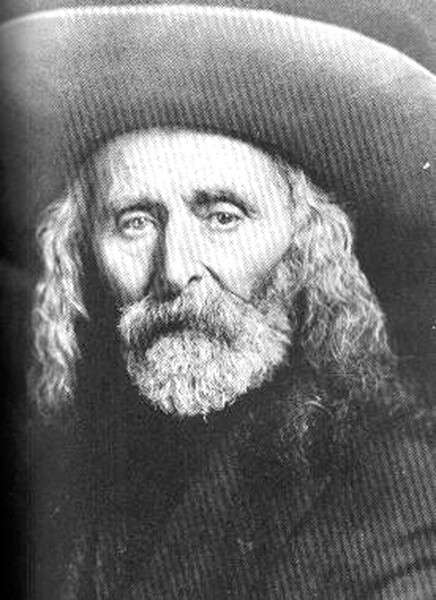The Montana of Andrew Garcia
Pat Hill | Monday Aug. 31st, 2015
Tales of trappers and traders on the Montana frontier often involve names like Jim Bridger or John Colter, but those early mountain men didn’t have a corner on the story-telling market. A man named Andrew Garcia, whom most people have never heard of, began a voyage in Bozeman more than 130 years ago that’s worthy of a western movie. 
The movie hasn’t been made yet, but the material is there. Tough Trip Through Paradise, 1878-1879, chronicles Garcia’s adventures, exploits, and heartbreaks in Montana territory during those two years, at a time when the wild and free life was giving way to the cow and plow. The book is an autobiography of sorts, edited by the late Bennett H. Stein of Park County, and first published by the Houghton-Mifflin Publishing Company of Boston in 1967. The book does stir the imagination of anyone familiar with Western Montana, for the story told by Garcia begins in the Bozeman area and ends near Glacier Park.
Bridger and Colter are familiar figures to western history buffs, but many people have never even heard of Andrew Garcia, and few references are made to him in publications of western history. That may be just how Garcia wanted it. Stein related Garcia’s reluctance to have his story go to print in the book’s introduction, recording that “Several interested people tried to help [Garcia] put his work into publishable form…He resisted all offers…His greatest fear was that his story would be appropriated for the western fiction market. He died in 1943 without having seen any of his work in print.”
Garcia, a Texan of Mexican heritage, moved north trailing cattle as a boy, and eventually ended up in Montana Territory around 1876, where he worked for the U.S. Army as a herder and a packer at Fort Ellis, just east of Bozeman. In the early summer of 1878, Garcia’s plans took a new route, and he decided to go into the “trapping and trading business” in the Musselshell River region, upon the urging of Beaver Tom, “a good buffalo hunter, but the trouble with him was his love for whiskey.” Although somewhat unsure of his new partner, Garcia quit his job with the Army and joined up with Beaver Tom.
Garcia staked the new outfit for the most part with his own money, for Beaver Tom had none. Pack and saddle horses, trade goods, ammunition, guns, and provisions were all needed. Bozeman businessman Walter Cooper, for whom Cooper Park is named, helped Garcia out with a loan for the rest of his goods, and the pair were ready for business.
Garcia and Beaver Tom left for the Musselshell in mid-July with unexpected company in tow. The enterprising pair had been joined by an outlaw gang that was stealing horses bound for Canada via the Whoop-up Trail. Garcia would encounter much more than horse thieves before he would depart the Musselshell country the next year, and much of the activity Garcia described really epitomizes the last gasps of the Old West.
During his efforts as a trader in the unforgiving territory north of present-day Big Timber, Garcia interacted with some of the last free Indians on the Montana frontier as the 1870s came to a close. He encountered Blackfeet, Bloods, Crows, Piegans, Crees, and Pend d’O’reilles, trading with them, getting to know their ways and their language, and the amorous Garcia ended up with the nickname the Squaw Kid. Drunks and desperadoes entered the mix as well. Before leaving the Musselshell, Garcia learned quite well of alcohol’s disastrous effects on the Native Americans.
Garcia also ended up with a Nez Perce wife during that time, In-who-lise (Girl with broken teeth), and much of the book deals with her recollections of the Nez Perce war of 1877. After leaving the Musselshell country in 1879, Garcia and In-who-lise traveled to the Big Hole Battlefield, where In-who-lise was wounded during the fighting. She also had several family members killed in the battle, and her story of the fight and the journey of the Nez Perce is a vivid account of a people whose way of life ended in violence and disappointment.
Garcia and his bride had returned to the Big Hole Battlefield so In-who-lise could retrace the route back to her home. Before reaching the Big Hole, the Nez Perce had fled western Idaho, traveled over Lolo Pass, and followed the Bitterroot River upstream while fleeing the pursuing U.S. Army. In their continuing efforts to avoid the army, the Indians eventually traveled through Yellowstone Park, continuing to the northeast, where they again fought the army at Canyon Creek, near present-day Billings. The Nez Perce continued northward toward Canada and freedom, but they again encountered the army in the Bears Paw Mountains, within 50 miles of the Canadian border, where they surrendered.
In-who-lise and Garcia were dissuaded from returning to Idaho upon learning that she would be sent to join the rest of the “renegade” Nez Perce being held in North Dakota, where they awaited their final journey to Indian Territory in Oklahoma. After a lively adventure with some Bitterroot miners who wanted to kill him, thinking he was an Indian sympathizer, but instead turned out to be friends, Garcia and In-who-lise traveled to the Kalispell Valley. In-who-lise comes to an untimely death courtesy of a Blackfeet war club as the couple leaves the Kalispell Valley with some Pend d’Oreilles bound for buffalo country, and Tough Trip Through Paradise also comes to an abrupt end.
How the finished book came about is a story in itself. Stein wrote that he found the original manuscript in 1948, containing several thousand handwritten and typed pages packed in dynamite boxes and wrapped in the waxed paper that gunpowder is stored in. Stein claimed that Tough Trip Through Paradise comprised a number of Garcia’s unfinished writings, written in a style that “would go for pages with no other form of punctuation than a comma, and as he grew older he tended to ramble. So I have punctuated, and cut, and restored the material somewhat, but the words are all his.” Stein also noted that Garcia did not begin his writing until after he was sixty years old, and the boxes contained more than twenty years worth of recollections committed to paper.
New editions of Tough Trip Through Paradise are published through the University of Idaho Press in Moscow, and can be purchased at your local bookstore, or online.
| Tweet |
